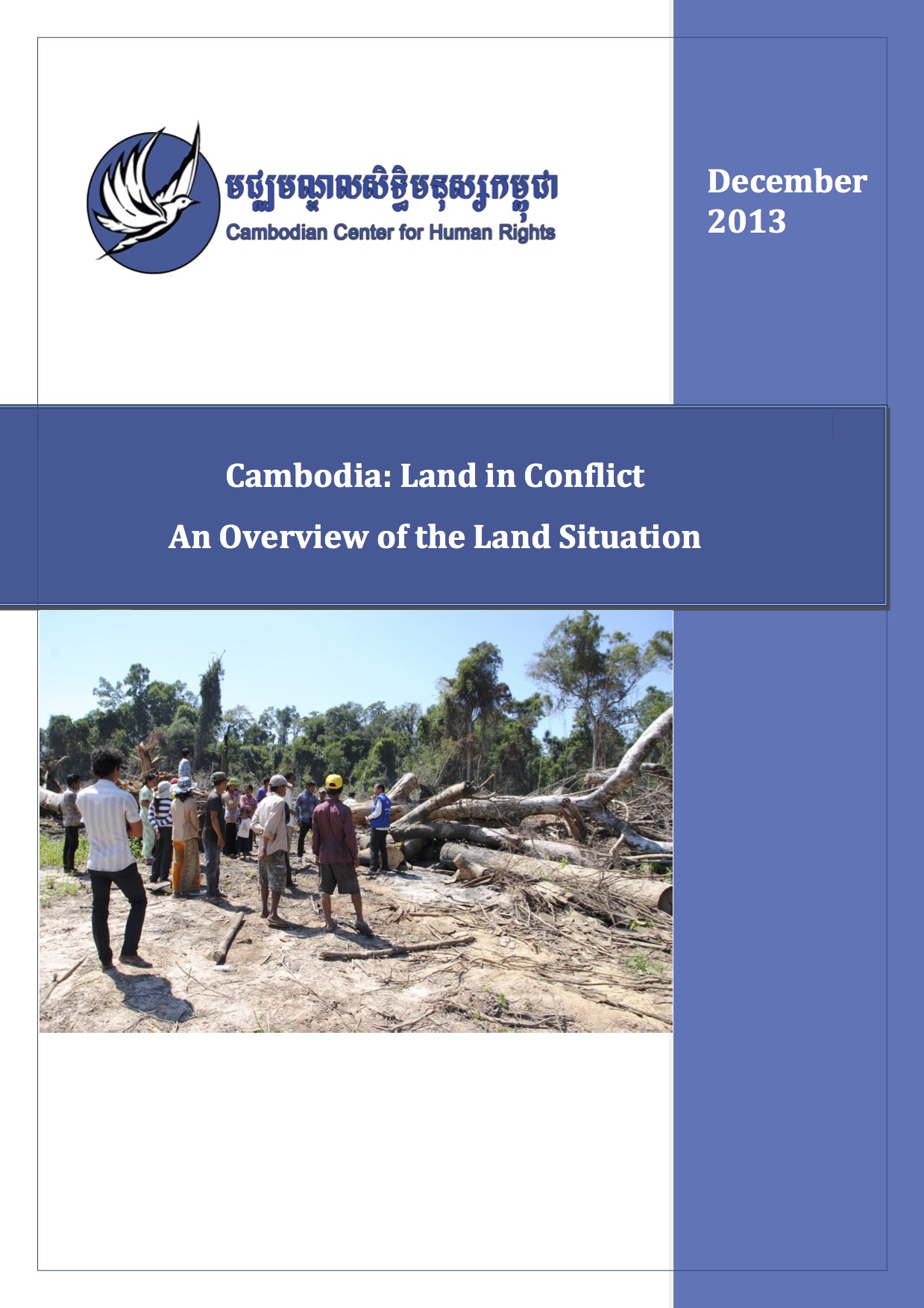Resource information
As noted by the Special Rapporteur on the situation of human rights in Cambodia (the “Special Rapporteur”) last August at the United Nations (“UN”) Human Rights Council, “Land rights continue to be a major issue in this country.”1 Conflict over land – combined with the widespread and systematic violation of land rights – is one of the most prominent human rights problems faced by Cambodians throughout the country, one whose roots can be traced to the abolition of private ownership when the Khmer Rouge took over power in 1975. More than two decades after the end of the civil war, the impact of these policies is still being felt. Despite a relatively protective legal framework, insecurity of tenure is one of the greatest fears for many Cambodians. Instead of restoring land security after years of forced displacement, the current policies of the Royal Government of Cambodia (the “RGC”) take advantage of the population’s lack of land titles in order to make way to deregulated development projects. These policies – combined with a total disregard of the law and a lack of political will to implement it – have turned land disputes into a land conflict where forced evictions are rife. Today, the despair of the affected population has grown so deep that protests and objections to land grabbing and forced evictions are rapidly intensifying. In light of the increasingly volatile nature of the land conflict in Cambodia, this Report aims to describe the sources, forms and impact of the conflict throughout the country. The Report offers an overview of the land conflict throughout the country and provides recommendations to the RGC.

